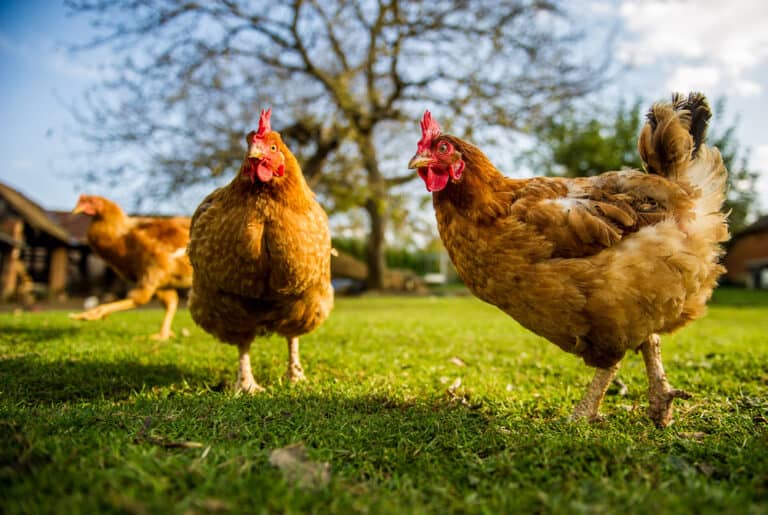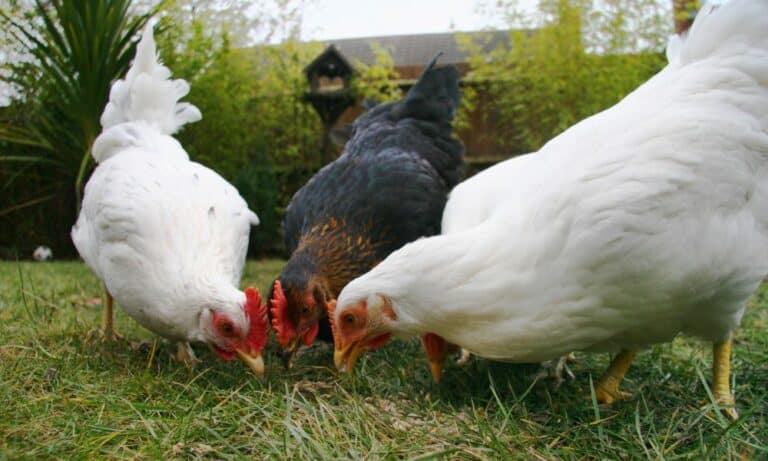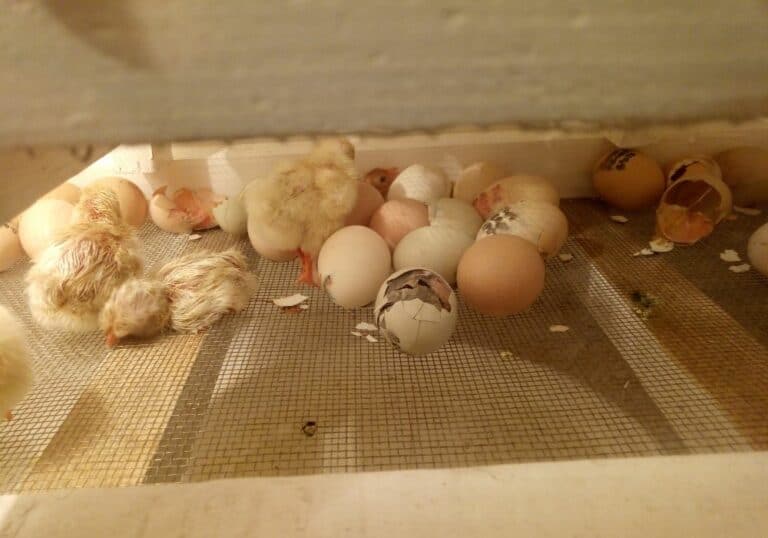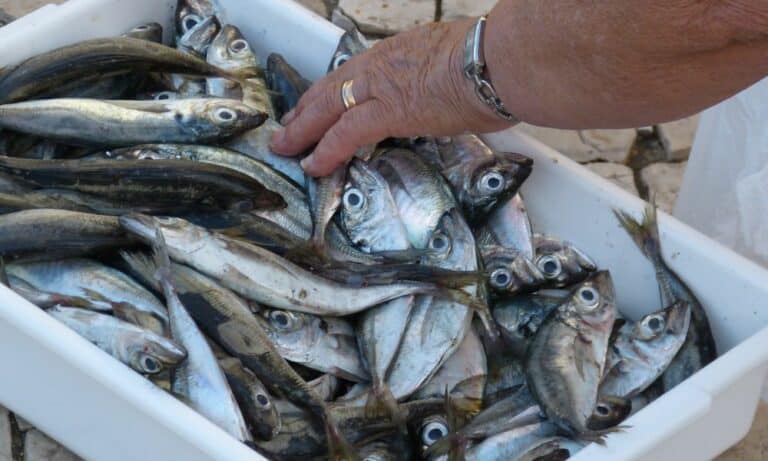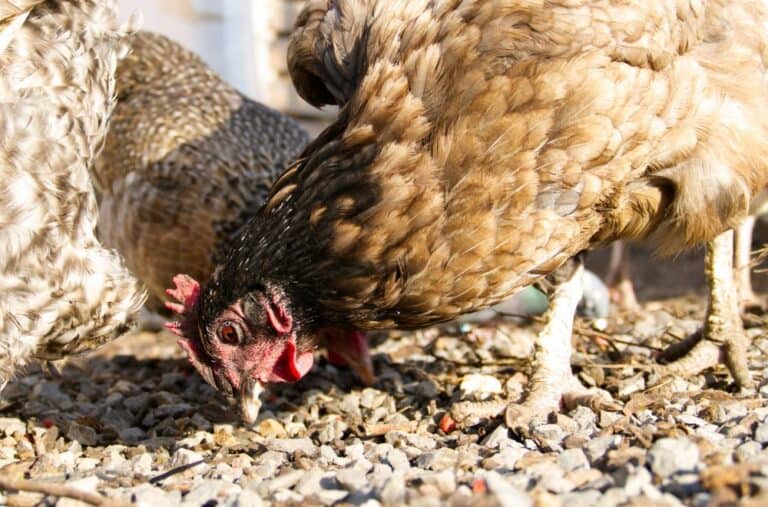Have you heard chicken growers use the term pullet chicken but are not sure what it means? Is it a breed of chicken or does it mean something else? Pullet chickens are not a separate breed but a term used to describe hens that haven’t started producing eggs yet.
If you are looking to improve your knowledge of pullet chickens, you are in the right place. In this article, we cover all the key information about pullet chickens, including how to look after them, how to tell them apart from adults, and when you can expect them to start producing eggs.
Lifecycle of Chickens
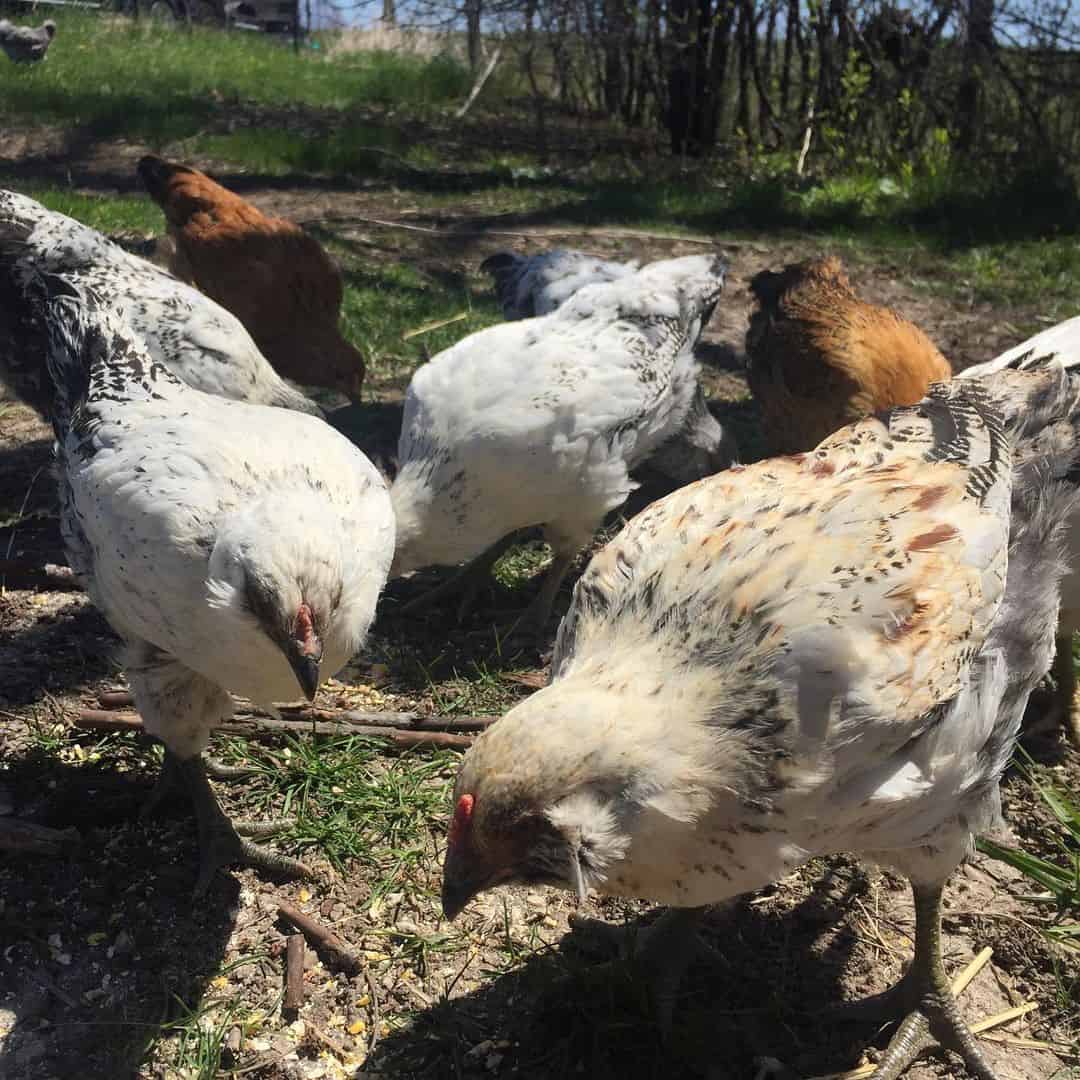
A chicken’s lifecycle starts with an egg. The chicks spend approximately 21 days from hatching inside the egg developing. It will take longer for some larger breeds and a little less time for bantam breeds.
When the chicks are born, they are fully feathered and start to grow rapidly. Within a few hours after hatching, they can walk, run and even find their food. At this age, they still need their mother’s protection but are otherwise almost self-sufficient.
For many breeds, a twelve-week-old chick is in the transition period to become a pullet but there is some variation between breeds, generally after a second mini-molt and it now becomes easier to tell a pullet from a cockerel.
The final stage is when pullets become hens. This is when the pullets are about one year old or when they have had their first proper molt. All adult female chickens are known as hens. However, some people use the word biddy to describe old hens that are no longer laying eggs.
What Are Pullet Chickens?
Pullet chickens are the teenagers of the chicken world as they are no longer chicks but not adults yet either. The word pullet is only used to describe young female chickens since young male chickens are known as cockerels. Hens are usually considered pullets from 16 to 52 weeks old.
Pullet chickens can be further categorized as being at a pre-lay stage or point-of-lay stage. Pullets that are at the pre-lay stage are usually between 16 and 22 weeks old and are developing the physical characteristics that are necessary for egg-laying.
The point-of-lay stage usually starts when the pullet chicken is 22 to 26 weeks of age, depending on the breed. This is when the pullets have matured enough physically to start producing eggs.
Advantages of Buying Pullet Chickens
There are several advantages to buying chickens when they have reached the pullet age. One of the main benefits for many backyard chicken keepers is that the chickens are past the time-consuming and often messy period of chick care.
Pullets are a lot easier to look after than chicks and you will not need any special equipment such as incubators to raise them. Pullets can simply be entered into the coop as soon as they arrive. However, you need to ensure that you introduce them properly if you are adding them to an existing flock.
When you buy pullets rather than chicks, you can be sure that you are getting hens and not roosters. It can be extremely difficult to separate male chicks from female chicks unless you have an auto-sexing breed, so when you buy chicks, you could accidentally end up with roosters when you wanted hens.
The final benefit is probably the most important for most chicken keepers. When you buy pullets, you will get your eggs a lot quicker. With chicks, you will have to wait at least five months before they start laying eggs, while pullets should be ready to lay their first egg within the first few months.
Disadvantages of Buying Pullet Chickens
While there are many advantages to buying pullet chickens, there are some disadvantages, too. One of them is that pullets are not as friendly as chicks and you may not get the same level of interaction with them as you will with hens you grow from hatching.
When you raise chicks, they get to know you from the beginning, while pullets are already teens when they meet you. Most pullets will be flighty with you at first, some can even be afraid of you. It will take a lot more effort to get your pullets to trust you the same way as a chick will.
The other disadvantage is that when you add pullets to your flock, they need to establish a pecking order. It is not pleasant, but it is necessary to expect pecking and feather-pulling at first. Avoid intervening unless the situation becomes bloody. Choosing breeds that get along well can reduce the amount of friction.
How Soon Will a Pullet Lay Eggs?
Pullets from different breeds will start egg production at different ages. However, most will start laying between 16 and 24 weeks old. Breeds such as the Black Stars or Red Rangers often start between 16 and 20 weeks. They are production breeds and were bred to produce a maximum number of eggs within a shorter life span.
On the other hand, breeds known as heritage breeds such as the Bredas or Orpingtons, will lay their first eggs a lot later. They might not start laying eggs until their 28th week or even later. These breeds will not produce as many eggs but they live longer and continue producing eggs for longer.
The key thing to remember, regardless of the breed you have, is to never rush pullet chickens into laying eggs. If they start producing eggs too soon, this can lead to health problems.
How to Identify a Pullet from a Hen

chickennoodleandco
If you are looking to buy a pullet, it is important to know how to tell it apart from a fully grown hen as, unfortunately, you might come across unscrupulous sellers trying to pass a hen for a pullet.
Feathers
Start by inspecting the chicken’s feathers. A pullet will have new feathers that look like a new coat and they look glossy. You should not see any missing or broken feathers. While there may be some, perhaps one or two, any more than that is a sign that it could be a hen rather than a pullet.
Behavior
All chickens will have their individual personalities and behavior patterns but are general differences in the way hens and pullets behave. While some pullets can be quiet and meek and others loud and bold, they should all be perky and curious. An older, more experienced hen is likely to be calmer and less flighty.
Health
Young pullets should be strong and healthy and not show any signs of illness. If the chicken appears listless, has dull eyes, or its breath wheezes and rattles, it is a sign of an unhealthy chicken. You do not want to introduce sick chickens to your flock as the illness could easily spread.
Legs
Another aspect to inspect is the legs. In breeds such as Rhode Island Reds with yellow legs, there are definite differences between pullets and hens. A pullet will have even yellow-colored legs, neat toenails, and smooth scales. In older hens, the yellow is faded and the legs will not be as smooth and you might see raised scales or broken toenails.
With breeds that have other leg colors, you can still focus on how even the coloration on the legs is. Also, look for smooth and even scales which are a clear sign that you are looking at an older hen rather than a pullet.
For more ways to tell the difference, watch this video from Talking Hens.
Looking After Pullets
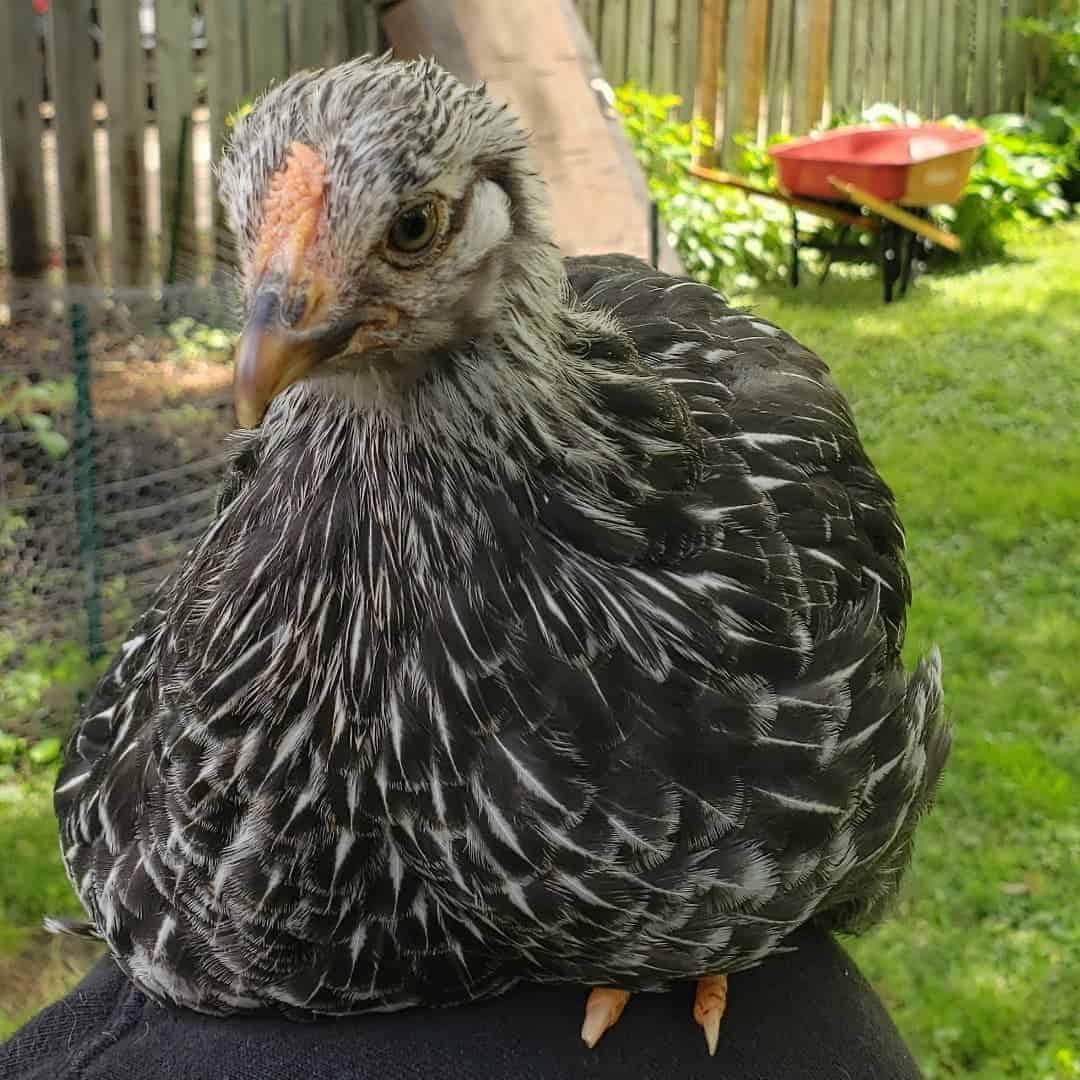
When you get pullet chickens, you need to provide them with a dry, clean, and well-ventilated coop where they are safe from predators and the elements. Your coop should be large enough to allow about four square feet per chicken, more if possible.
You need to provide them with a diet that includes all the nutrients necessary for healthy growth, especially protein. You can buy layer feed that is formulated for pullets and includes everything they need from your local feed store. As well as providing them with nutrient-rich food, you need to make sure they have access to fresh water at all times.
To ensure your pullets grow into healthy hens, you should vaccinate them against diseases common among chickens. Keeping their environment clean and providing them with enough space and chances to free range will also help to keep your pullets healthy and happy.
Conclusion
Pullet chickens are at the teenage stage. They are no longer a chick but not yet a hen either. They are on the verge of becoming egg-laying hens. If you are new to keeping backyard chickens, getting pullets instead of chicks can be a lot easier and will give you eggs a lot sooner.
You can also be certain that you are getting hens rather than roosters when buying pullets because by that age the gender of the chicken becomes obvious. However, buying pullets is not for everyone and you need to consider the disadvantages together with the advantages before you decide.
If you have questions about pullet chickens not covered in this article, write them in the comment section.

